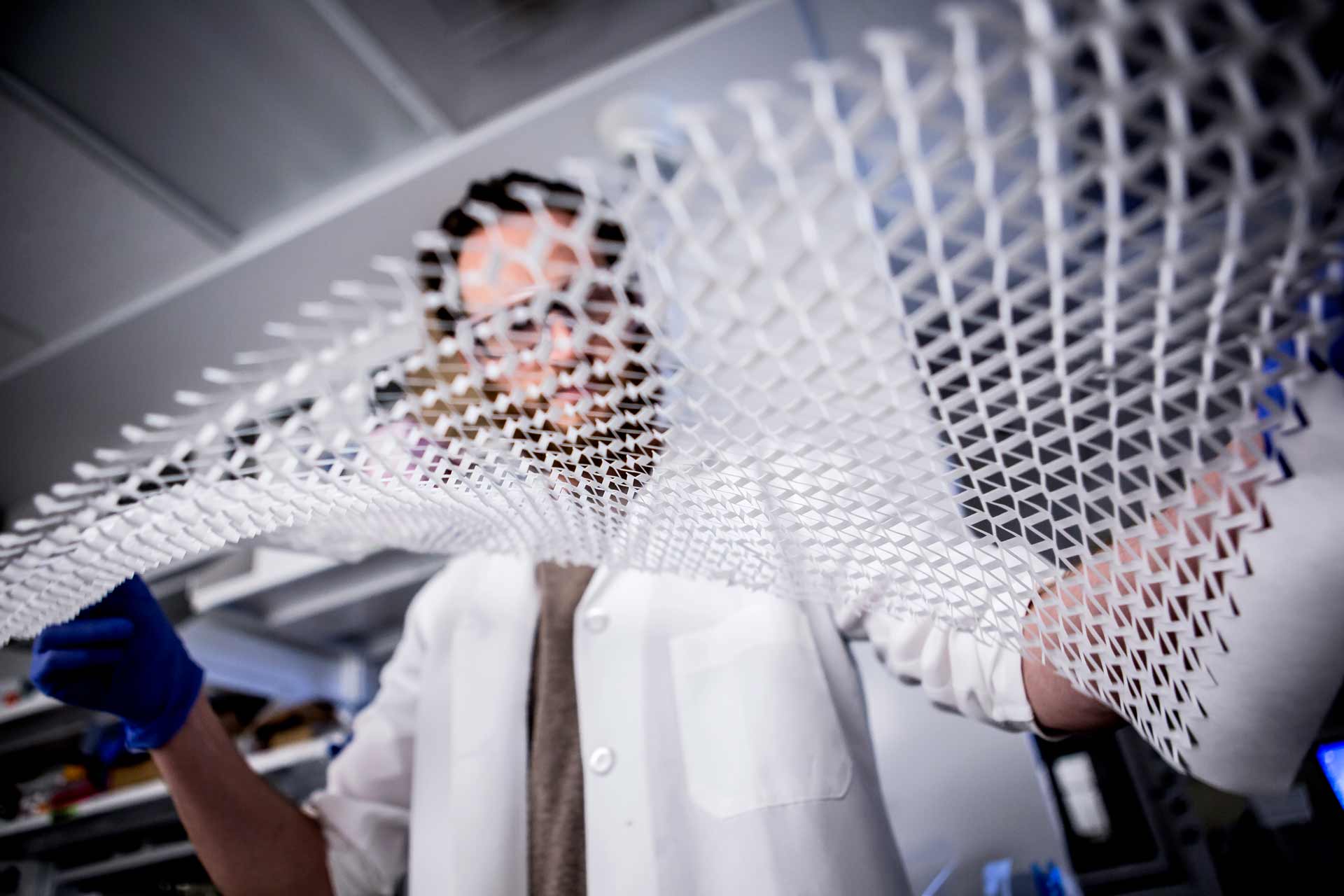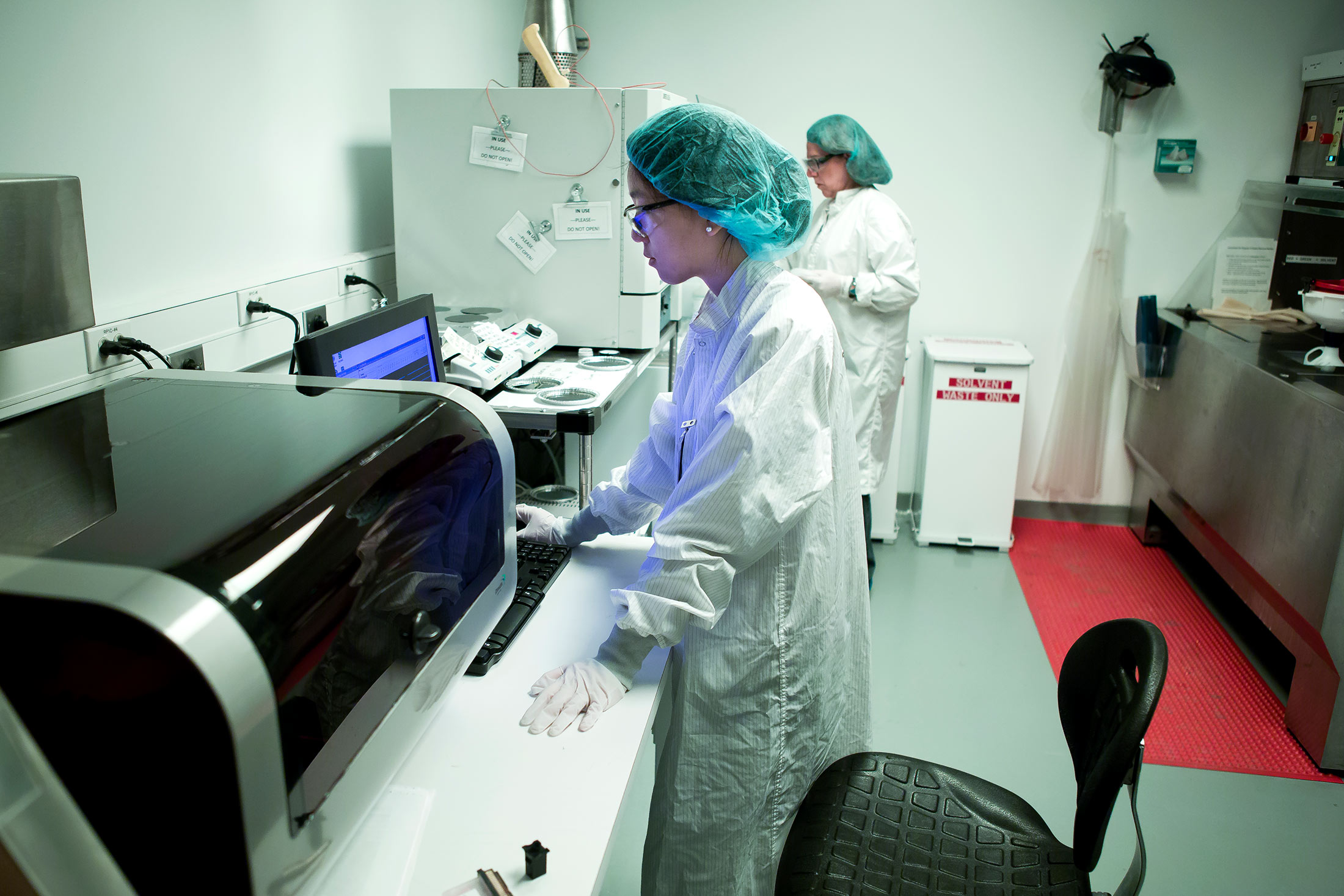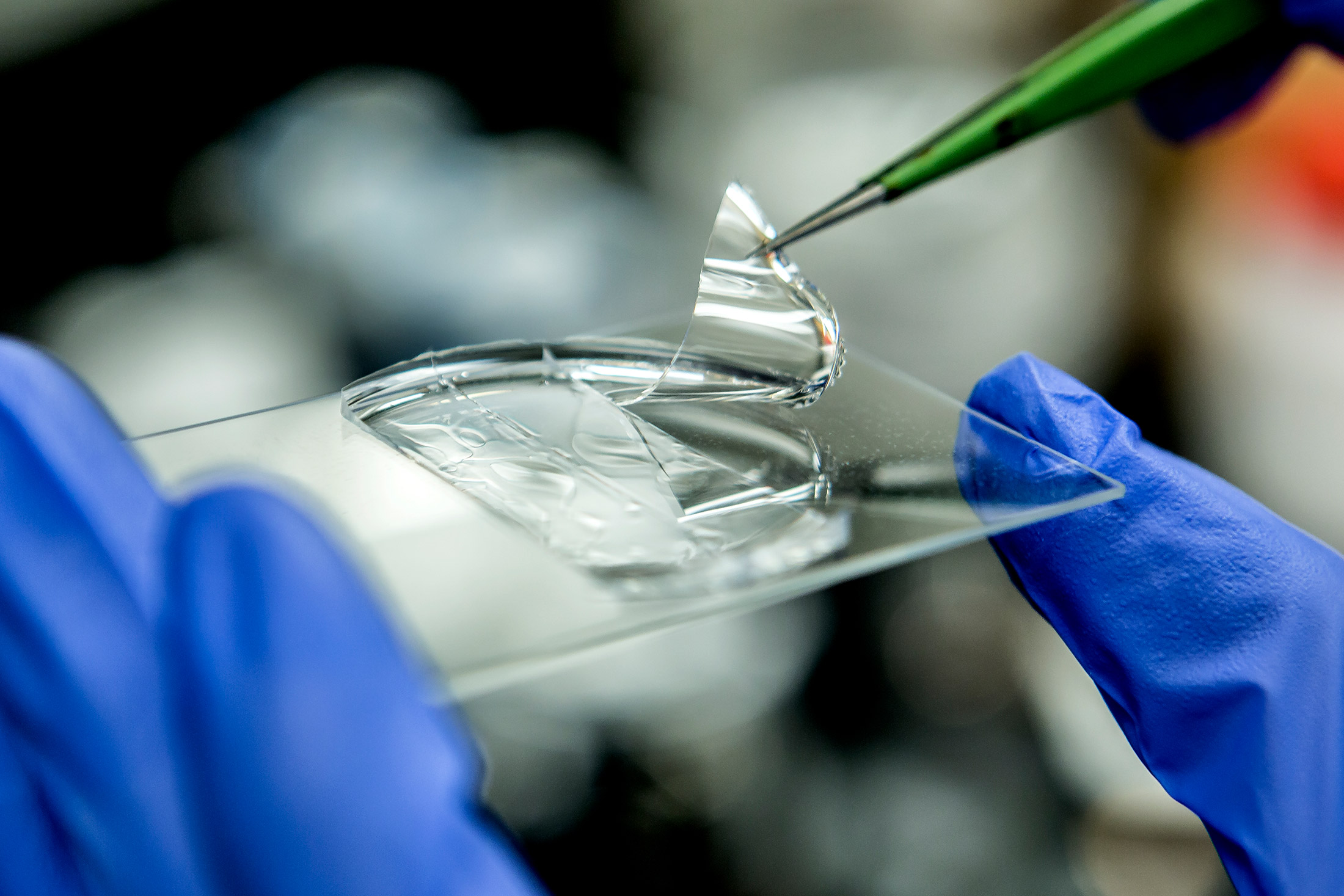Nanotechnology
Nanostructured materials represent the one of the five technological pillars of the Biointerfaces Institute. The focus of this work is on simulating nanomaterial self-assembly and developing the different kinds of nanotubes, nanoprobes, nanocatalysts and nanostructures for applications in medicine, energy conversion, and electronics.
Biointerfaces Institute researchers use nanostructured materials in drug delivery, neural interface, rare cell detection, different imaging modalities, and microfluidics organ replicas. Research groups from UM Medical School or Biomedical Engineering department focusing on the end-use therapeutics or diagnostics utilize nanoparticles developed by BI research groups specializing in particle synthesis. Some of the nanomaterials that developed in BI are unique to UM. They include “janus” biodegradable nanoparticles, iron sulfide (FeS2) nanoparticles, aramid nanofibers (ANFs), and biomimetic composites. Examples of ongoing projects taking advantage of unique properties of nanomaterials developed at the Biointerface Institute include selective targeting of breast cancer cells, long-term implants for brain recording, artificial bone marrow, single cell metabolism monitoring with SERS-active nanoparticle assemblies, and others.
Basic research on nanomaterials that is expected to advance the field of biointerfaces in the next 5-10 years includes replication of protein functions by inorganic nanostructures, theory and practice of nanoparticle self-organization phenomena, DNA mechanics, high-speed computer simulations of nanoparticle dynamics, membrane-particle interactions, and wetting at nanoscale interfaces. Considerable effort is also invested in understanding the challenges for scaled up manufacturing nanoscale materials and devices by bridging nanotechnologies with different types of high-throughput lithography and microelectromechanical devices.
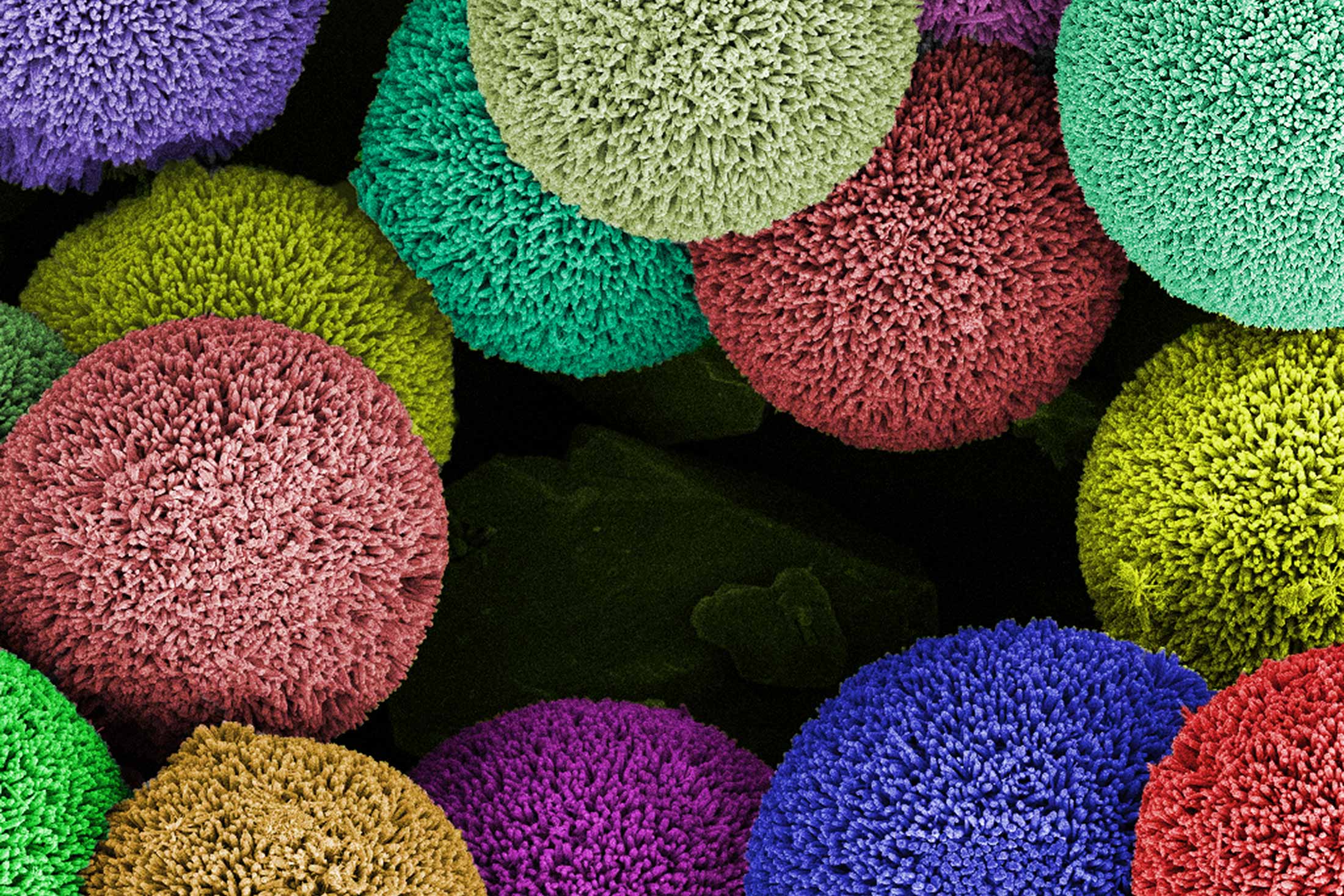
Surface Corrugation offers important parameters to design physico-chemical properties of particles. The 'Hedgehog' particles are constructed by hydrothermal and sonochemical growth of ZnO nanowires on arbitrary microspheres.
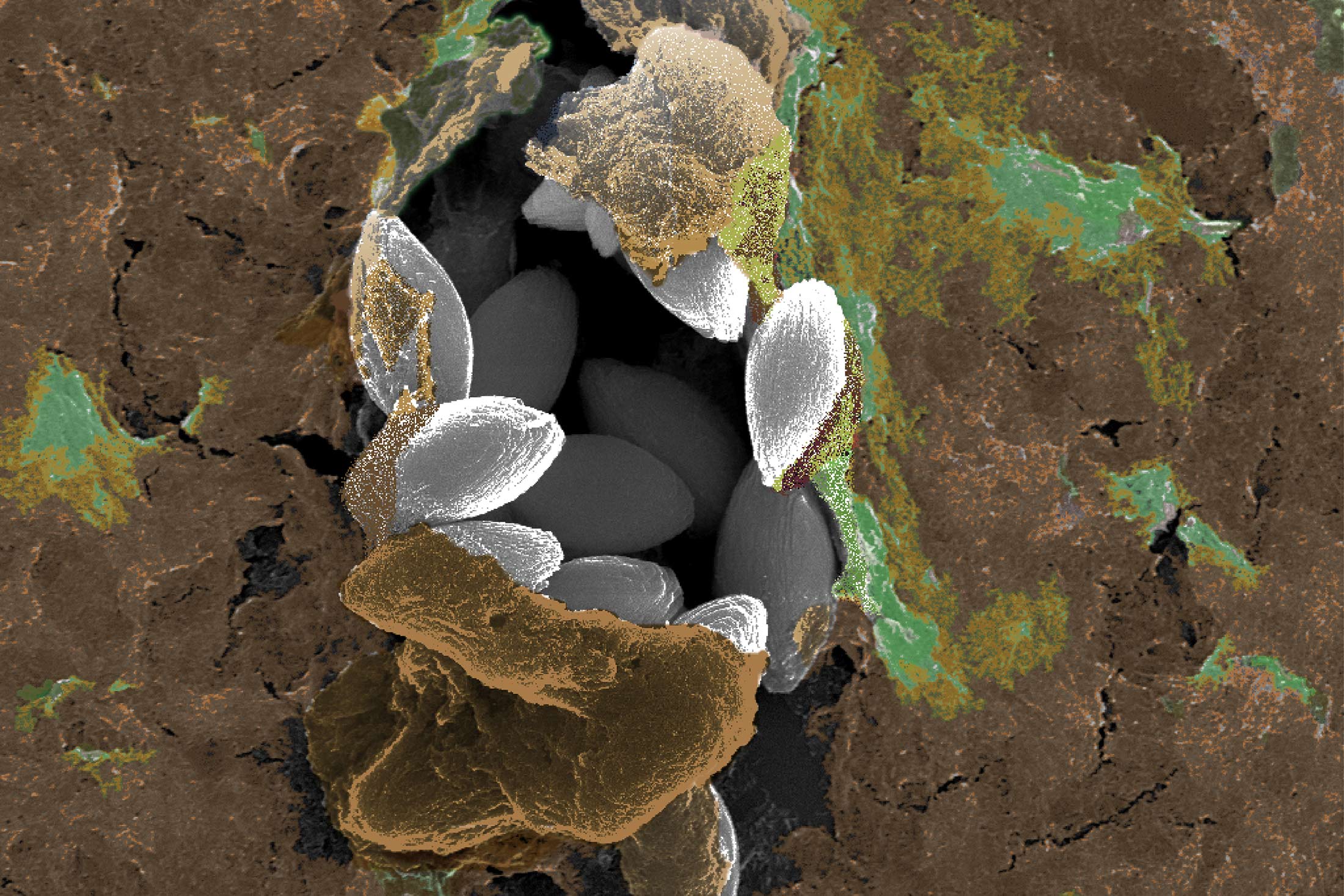
The micron scale ovals, constructed by self-assembly of CdTe nanoparticles, are buried under layers of graphene oxide sheets. This image depicts a handful of buried eggs ready to hatch.
Related Press Releases & Articles
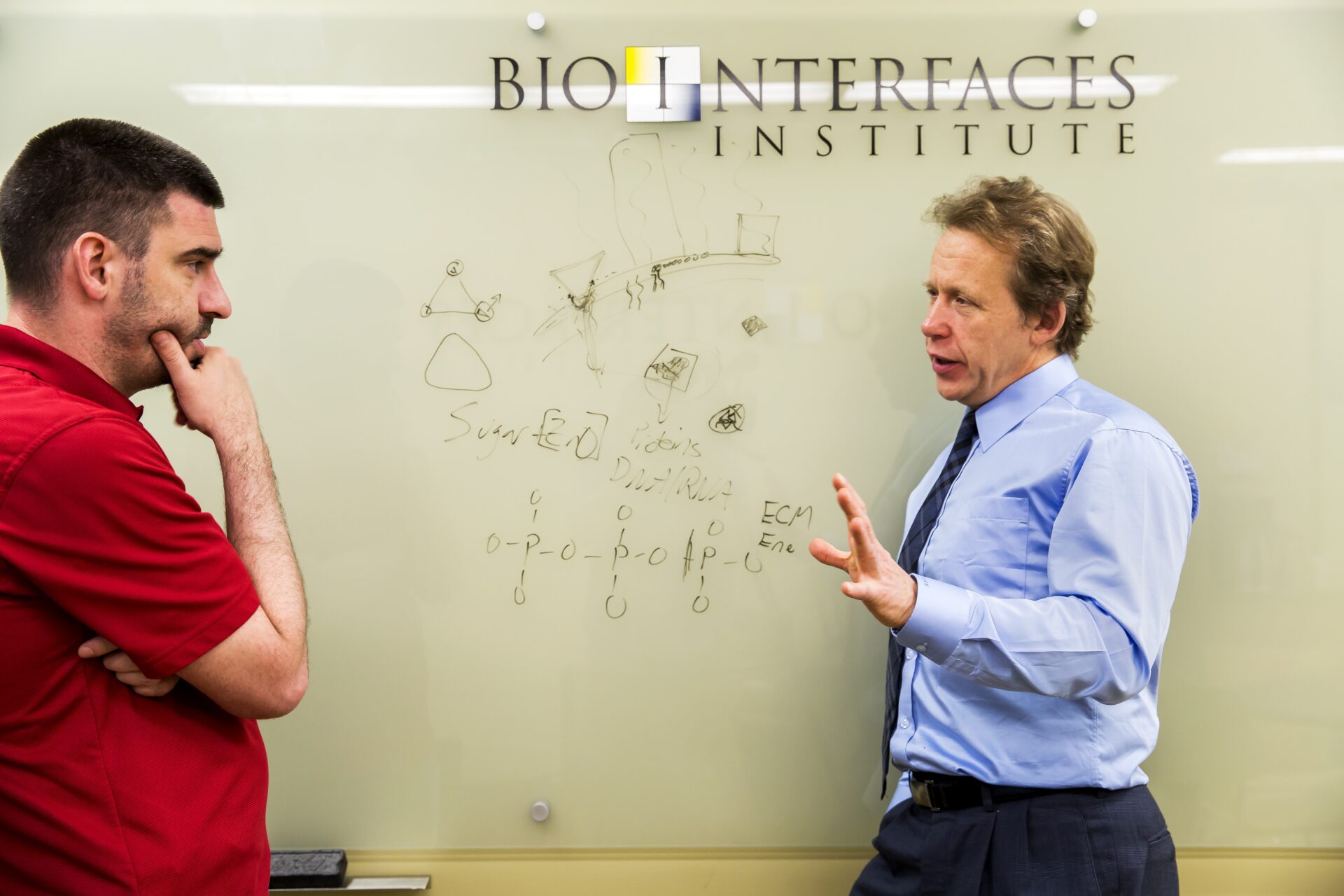
- May 19, 2022 / Article
Nanobiotics: Model predicts how nanoparticles interact with proteins
Developed in the VanEpps and Kotov labs, a new machine learning model that predicts interactions between nanoparticles and proteins.
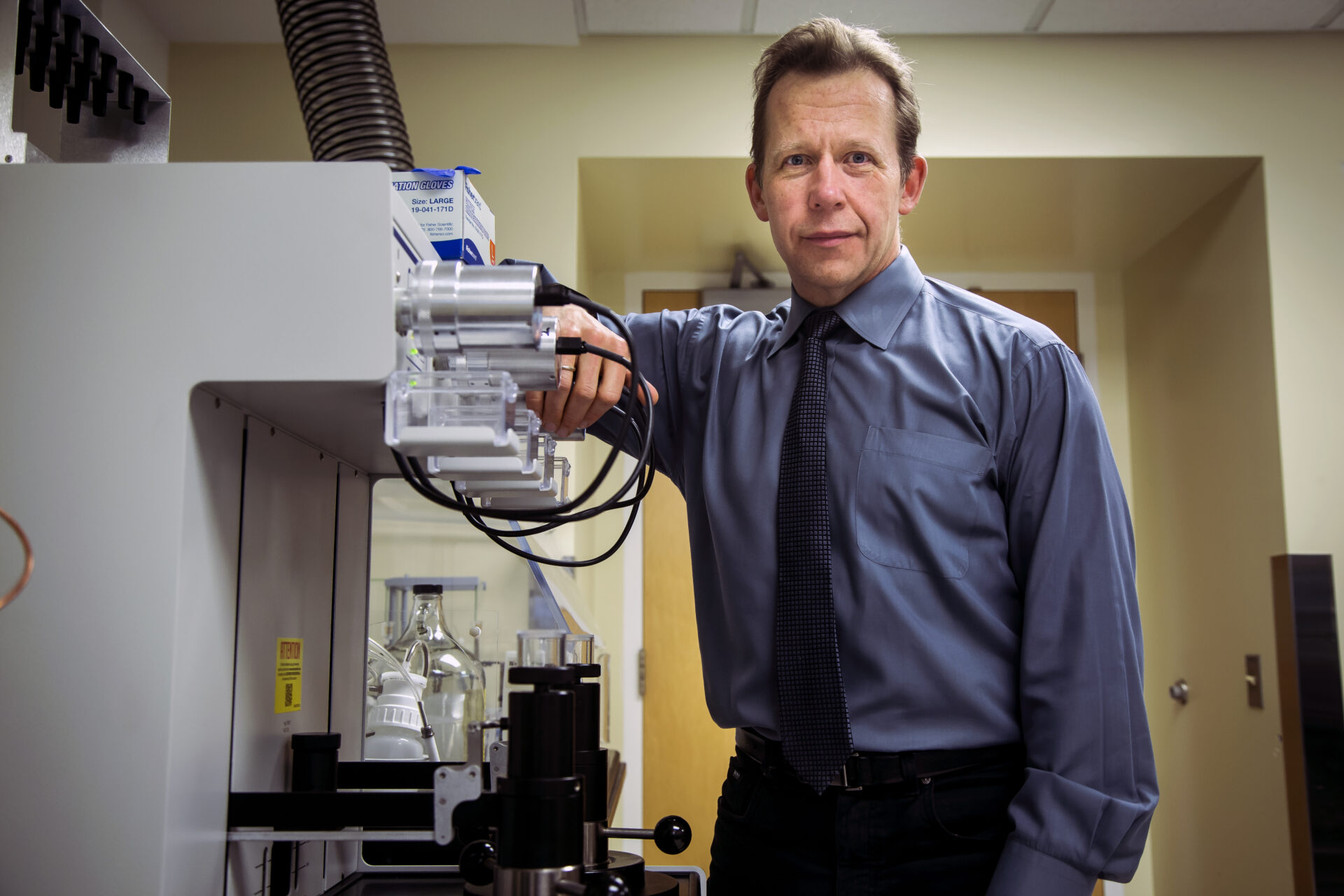
- May 2, 2022 / Article
Kotov joins American Academy of Arts and Sciences
Nick Kotov was named to the American Academy of Arts and Sciences for his significant contributions in scholarly and professional fields.
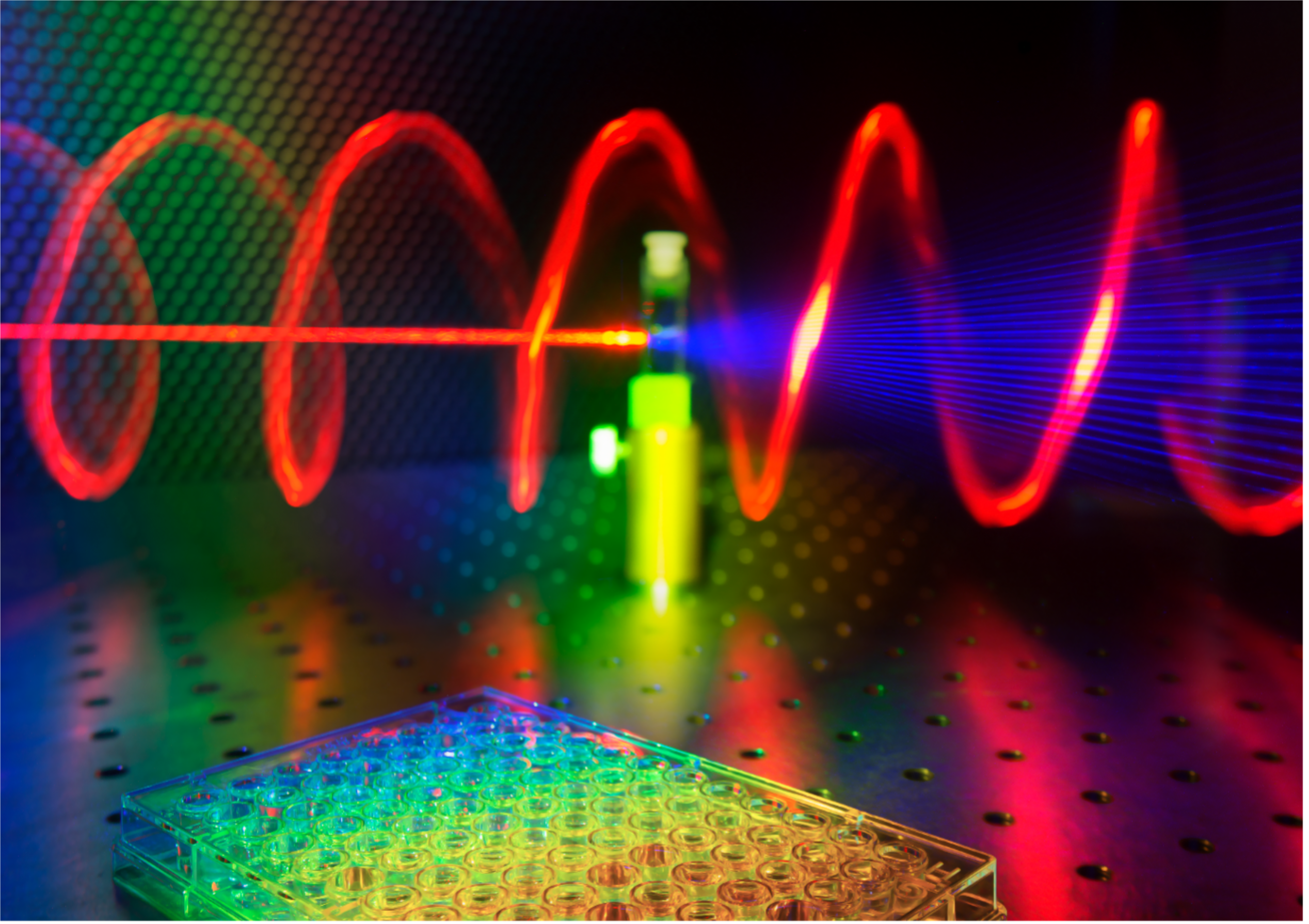
- January 13, 2022 / Press Release
Kotov Lab & Univ. of Bath Researchers Discover New Photonic Effect
The collaboration developed a new photonic effect which could speed up the development of new antibiotics and drugs through automation.

- September 8, 2021 / Award
Nick Kotov wins Nanoscale Science Award
Congratulations to Nick Kotov on winning the 2022 Nanoscale Science and Engineering Forum Award from AIChE for his discovery of chiral nanostructures with large amplitude optical activity and establishing chemical principles for their engineering.
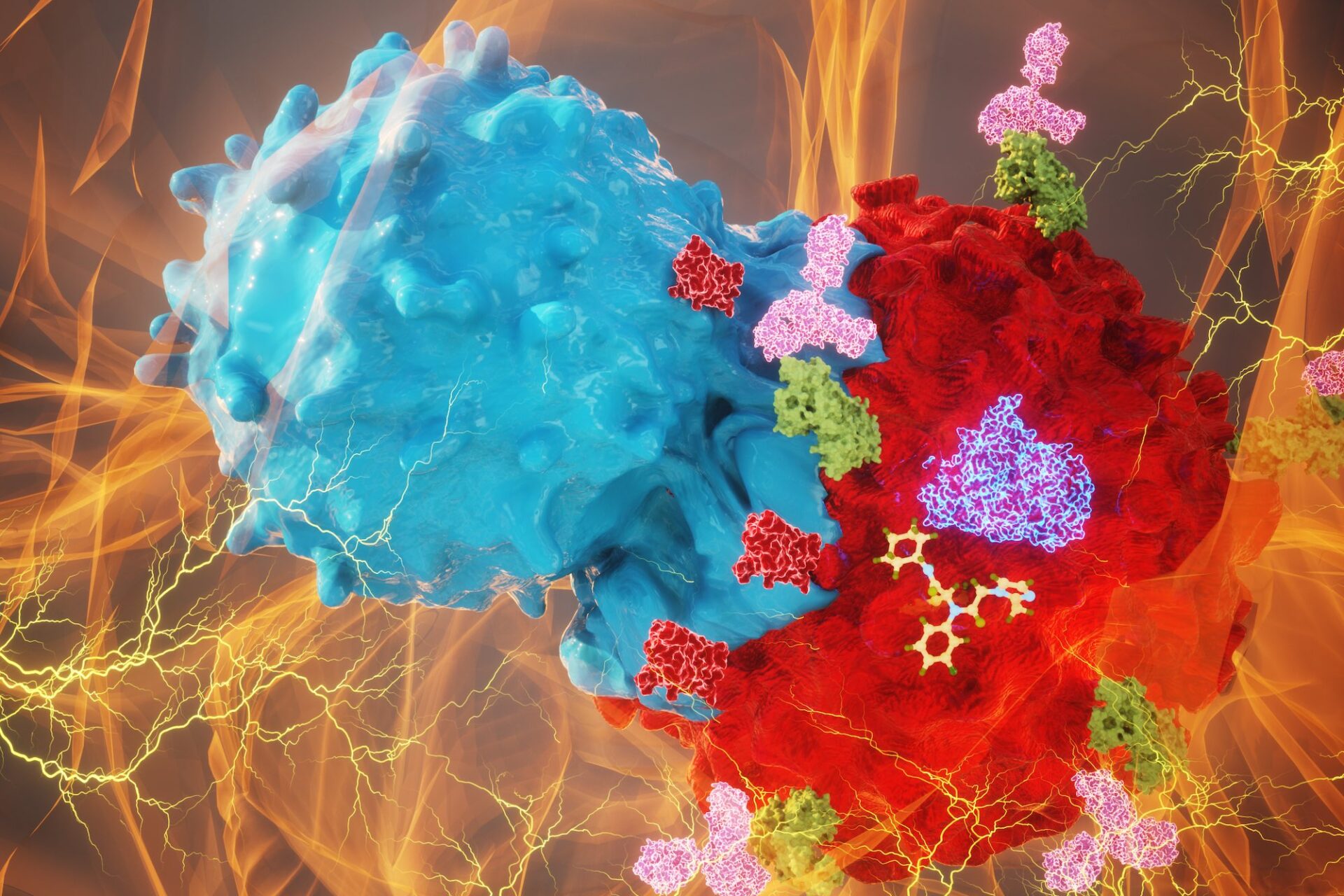
- July 22, 2021 / Press Release
BioInnovations in Brain Cancer launches faculty search
The BioInnovations in Brain Cancer Initiative (BIBC) at the University of Michigan invites applications for a tenure-track position at any level in brain cancer biology and technology research (including, drug/molecular transport/imaging in the brain tissue; translation-focused glioma, epigenetics and/or scRNA-seq research; and non-viral nucleic acid delivery).
Applications will be accepted on a rolling basis, but review of applications will begin on October 1, 2021.

- May 21, 2021 / Press Release
Faculty Promotions
Congratulations to James Moon, Sunitha Nagrath, Anna Schwendeman and Anish Tuteja on being promoted to Professor!

- May 17, 2021 / Award
2021 BI Innovator Awardees
Congratulations to the 2021 BI Innovator Award Recipients. BI Innovator awards recognize members of the BI research community who are active participants in the research, innovation and translational ecosystem at BI and making a difference in our community.
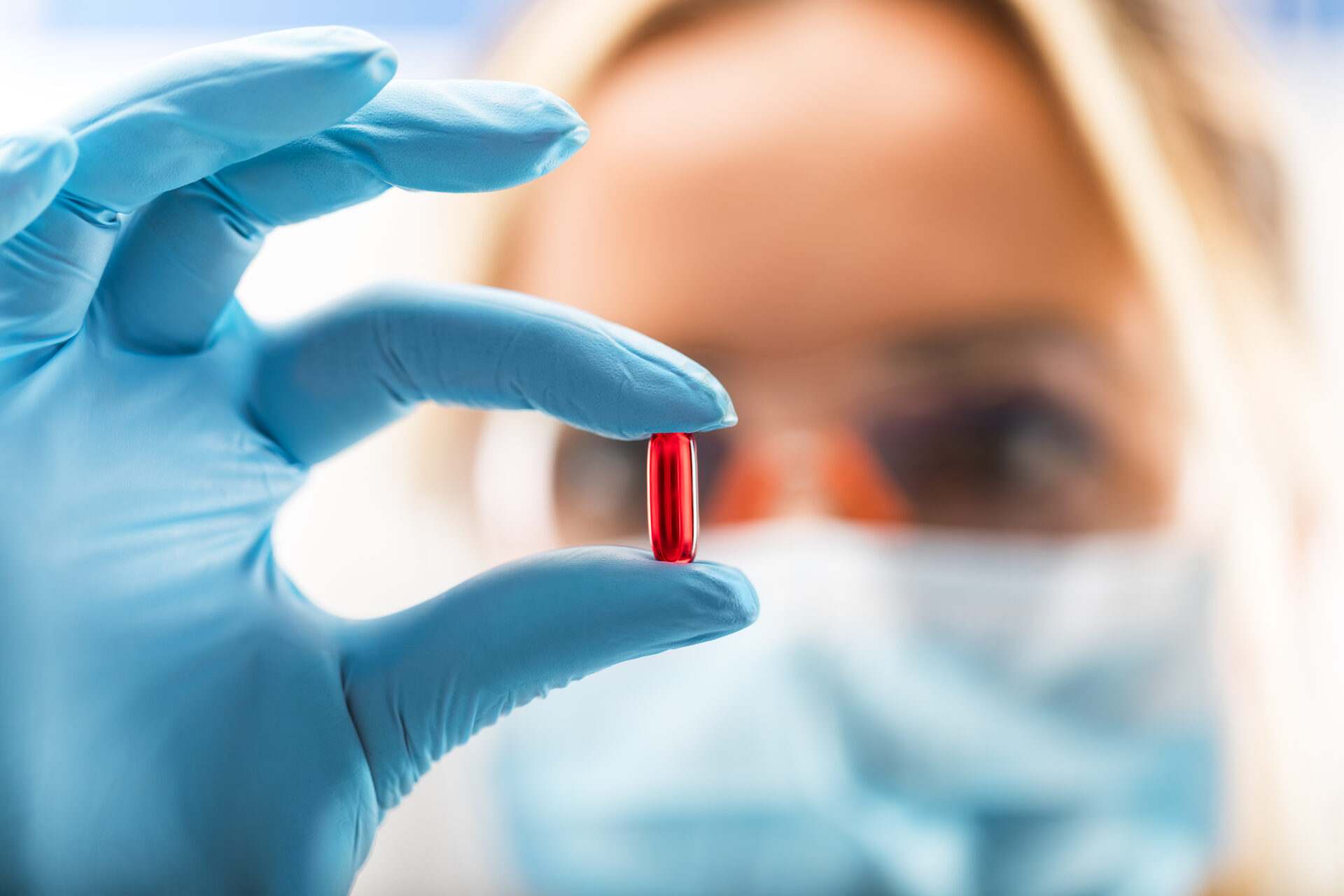
- April 1, 2021 / Article
Recent BI Publications
Publications from BI Research Groups in March
- March 17, 2021 / Article
Kotov Lab develops structural batteries for mobile robots
Researchers in the Kotov lab are working on biomorphic structural batteries which could provide more energy to robots.
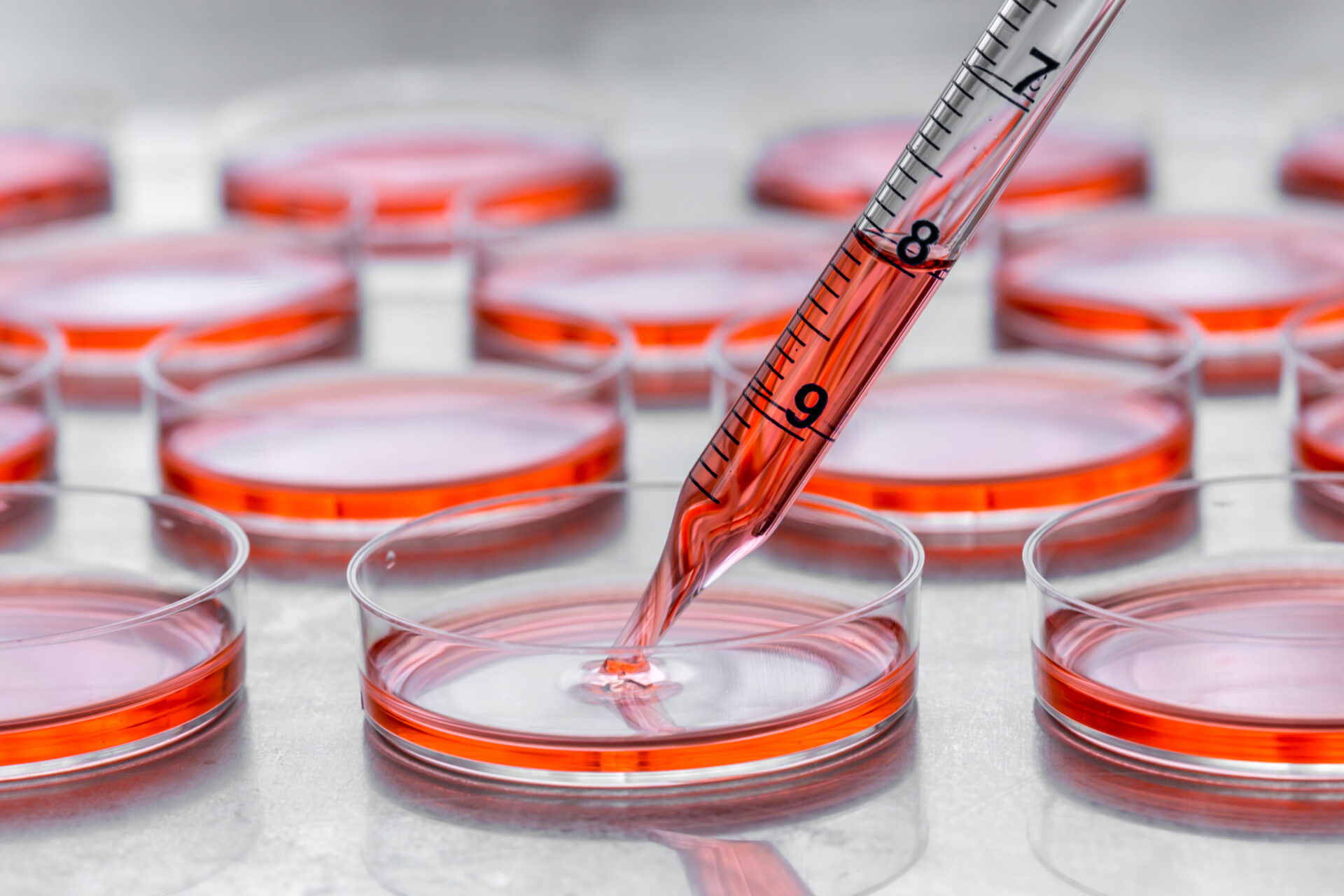
- March 1, 2021 / Article
Recent BI Publications
Publications from BI Research Groups in February
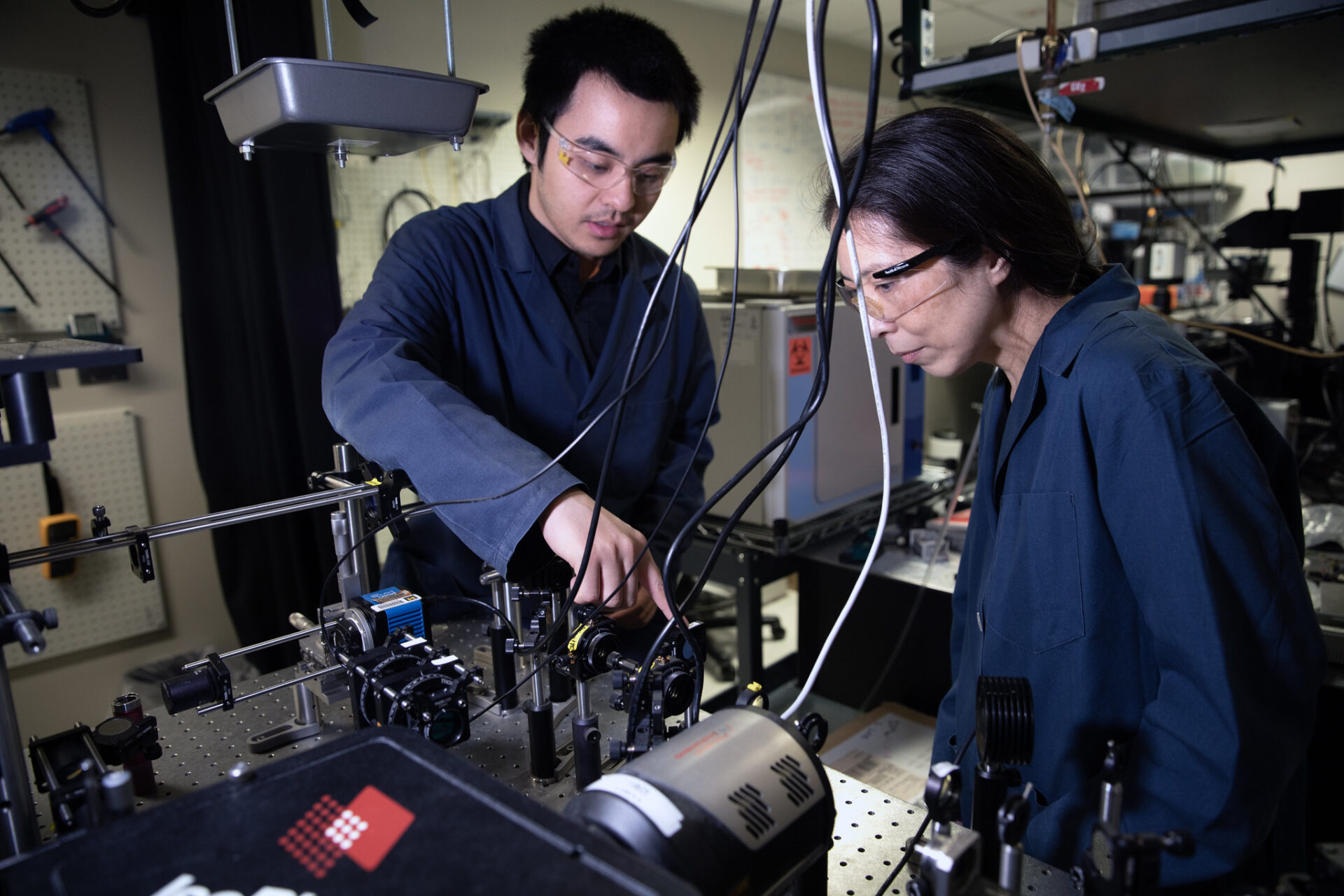
- July 20, 2023 / Article
Phase intensity nanoscope (PINE) opens long-time investigation windows of living matter, new article authored by Dr. Somin Lee published by Nature Communications Nature
“Our genetic code doesn’t actually include enough information to encode every detail of the organization process. We want to explore the mechanisms of collective behaviors without central coordination that are like birds flying in formation—in which the system is driven by interactions between individual parts,” Somin Eunice Lee Ph.D.
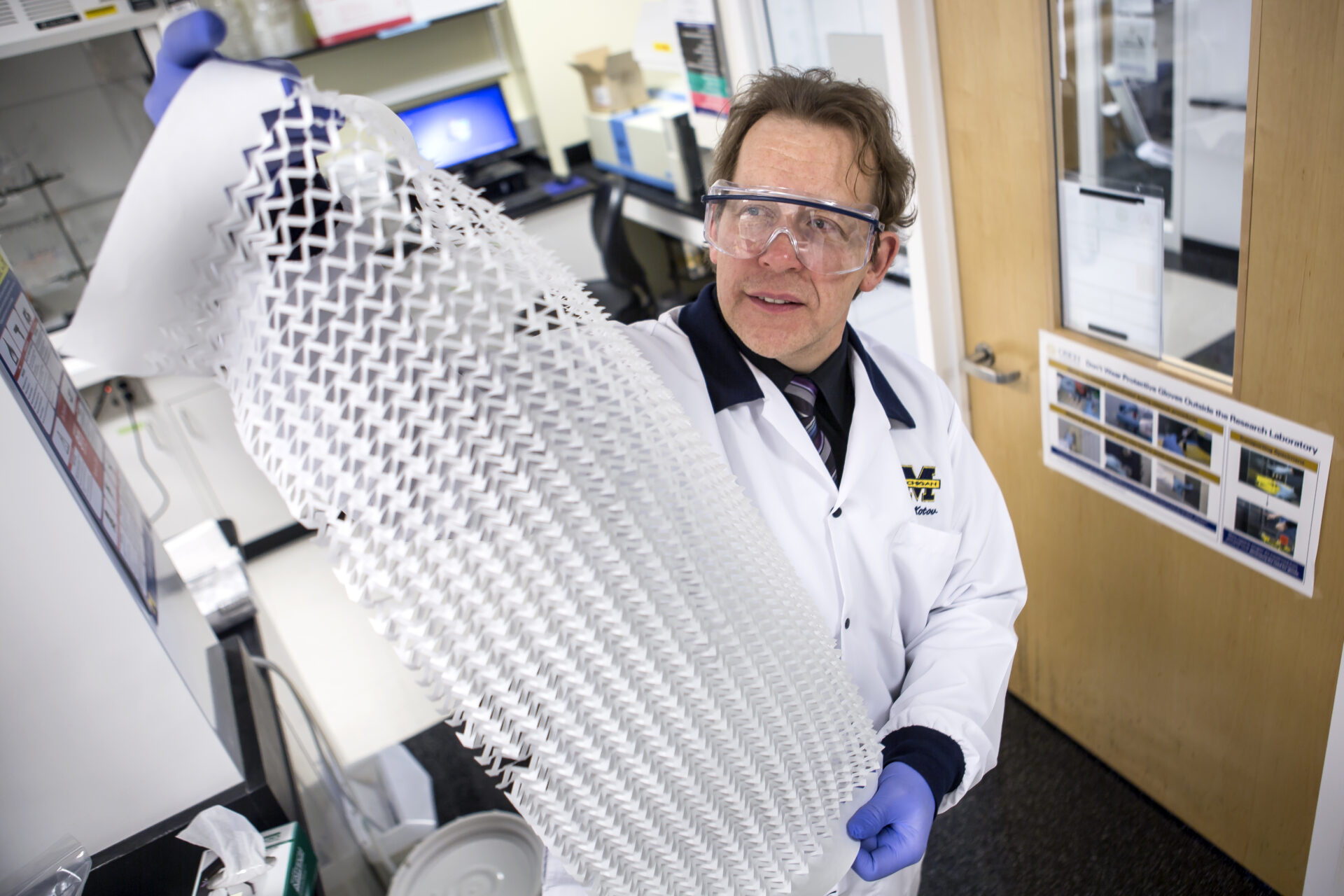
- November 30, 2022 / Article
‘Transformer’ pinwheels offer twist on nano-engineered materials
A newly discovered pinwheel structure — self-assembled from pyramid-shaped nanoparticles — may enable unique material properties that could be useful in areas like machine vision, armor, chemical and biological sensing, and more.
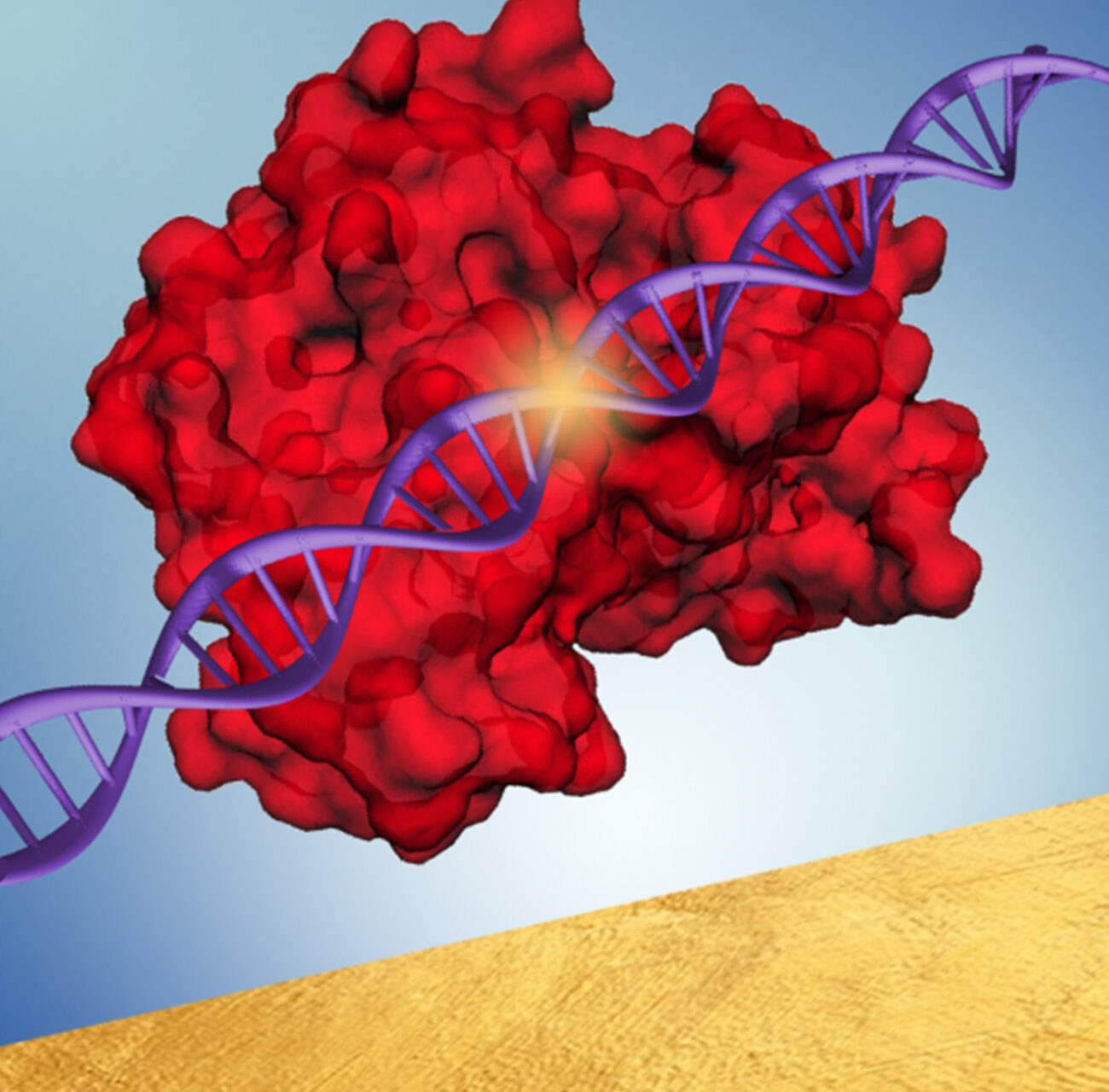
- September 22, 2022 / Press Release
A view into what’s really happening during gene editing for Precision CRISPR
Somin Lee and her research group developed a way to reduce trial and error in gene editing by getting a look at the process in real time.
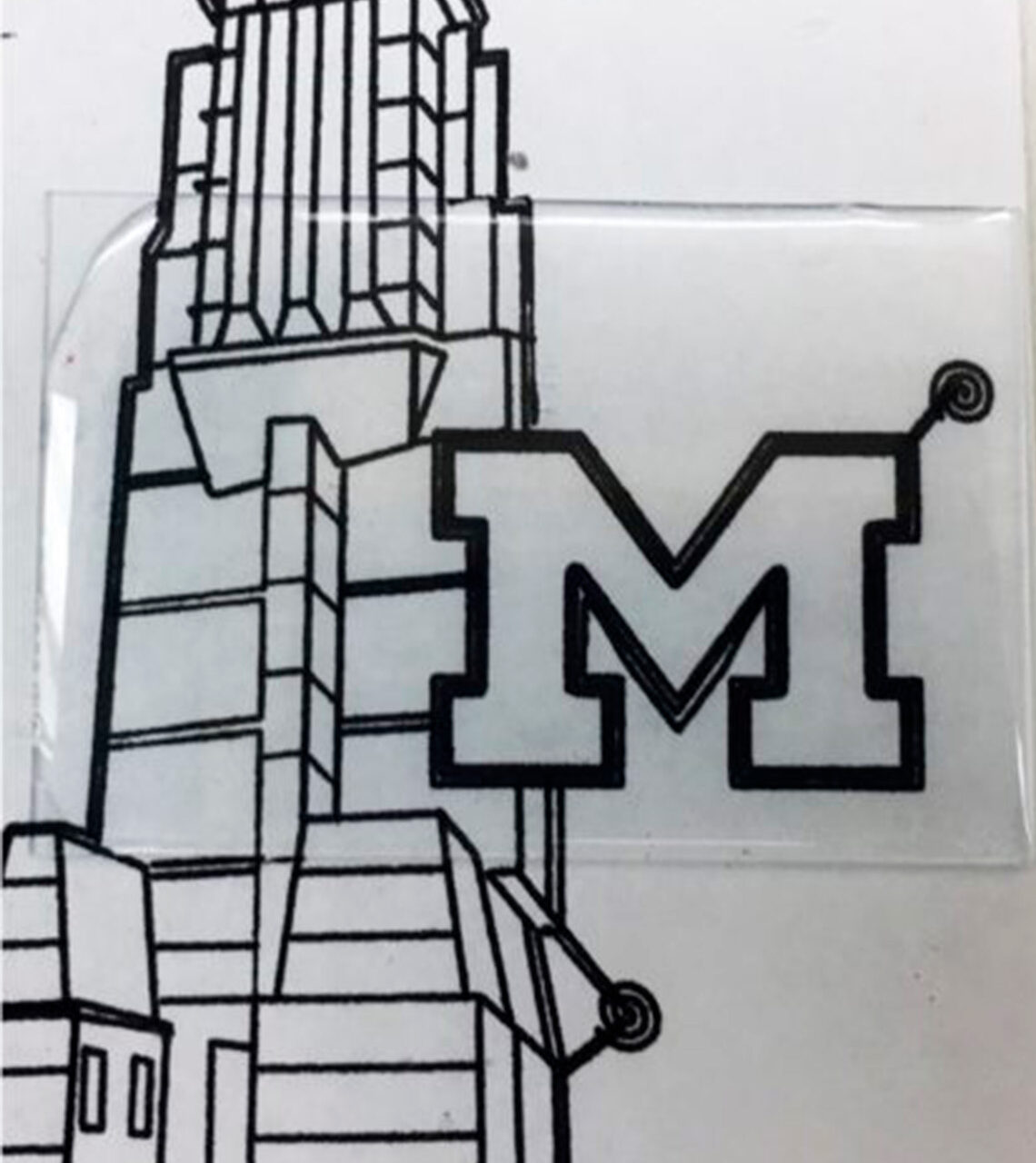
- August 30, 2022 / Press Release
Durable coating kills the COVID virus and other germs in minutes
Polyurethane locks in the antimicrobial power of tea tree and cinnamon oils. The new technology from the Tuteja lab could start making public spaces safer within a year.
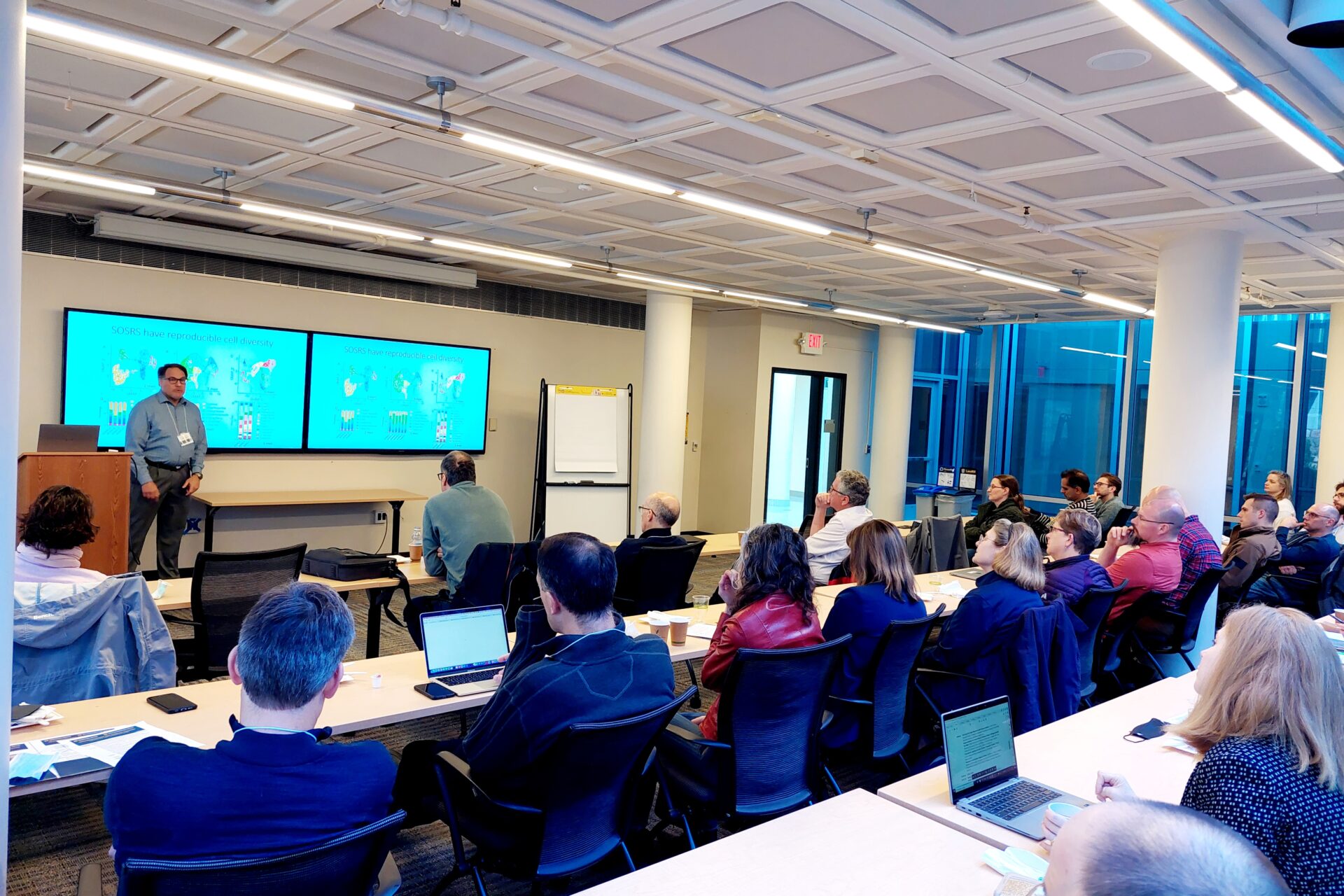
- August 12, 2022 / Press Release
Neuroregeneration and Cognition Challenge Seed Fund Awards
We are pleased to announce the funding selections for the MNI-BI 2022 Neuroregeneration and Cognition Challenge seed fund competition.

- August 4, 2022 / Award
2022 BI Innovator Awards
Congratulations to the 2022 BI Innovator Award Recipients. BI Innovator awards recognize members of the BI research community who are active participants in the research, innovation and translational ecosystem at BI and making a difference in our community.
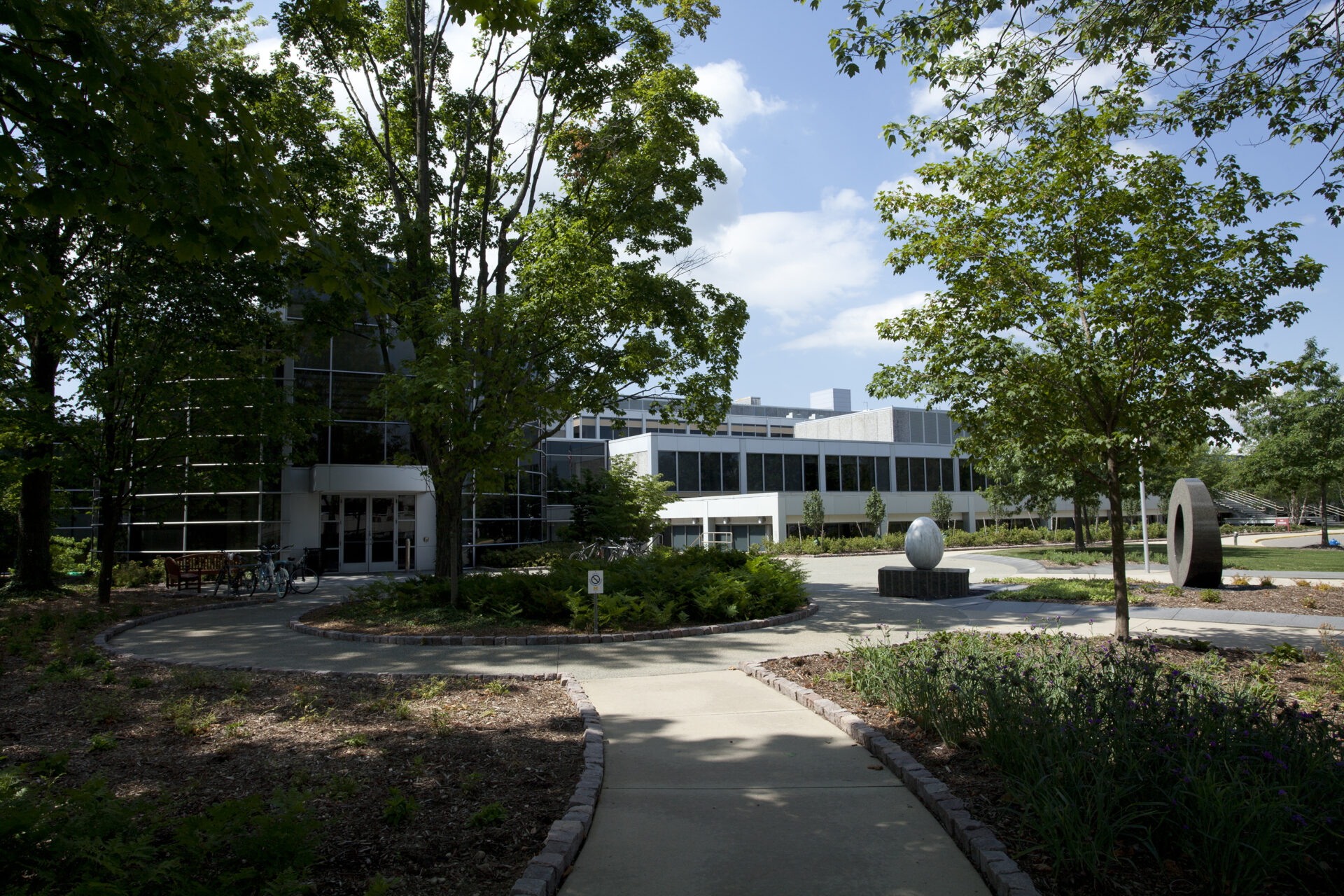
- August 1, 2022 / Press Release
New members join BI’s External Advisory Board
BI welcomes Carl Gordon and Natasha Shervani of OrbiMed as new members of its External Advisory Board.

- July 25, 2022 / Award
Glotzer receives Vannevar Bush Faculty Fellowship
Sharon Glotzer has received the Vannevar Bush Faculty Fellowship from the U.S. Department of Defense, becoming one of nine distinguished faculty scientists and engineers to receive the award this year.
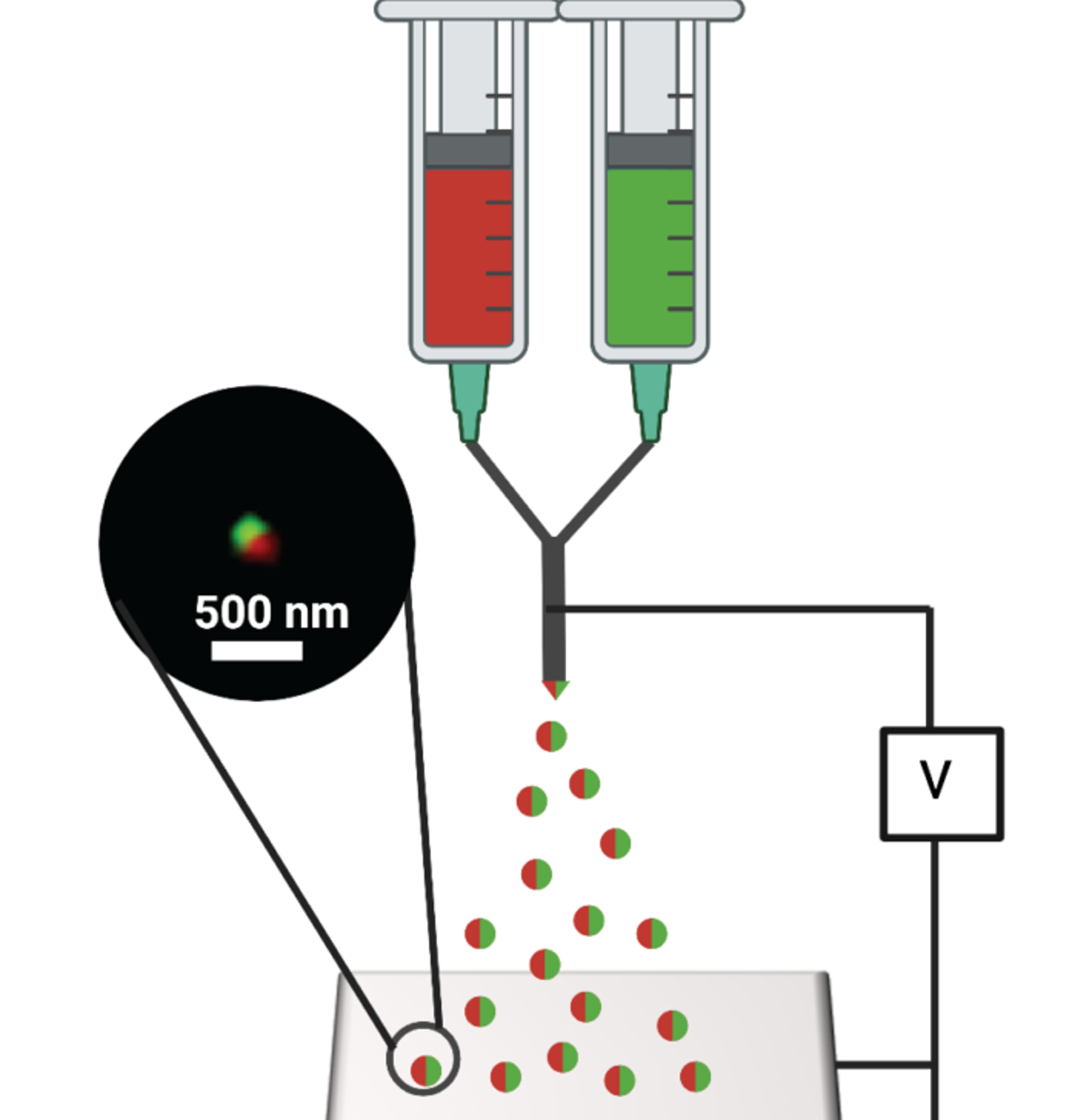
- June 22, 2022 / Award
$2.38M to test nano-engineered brain cancer treatment in mice
Joerg Lahann and Colin Greineder are part of the research team that received funding from the NIH to study a new nanomedicine that crosses the blood-brain barrier, engages the immune system and kills cancer cells may offer hope for treating the most aggressive form of brain cancer, glioblastoma.
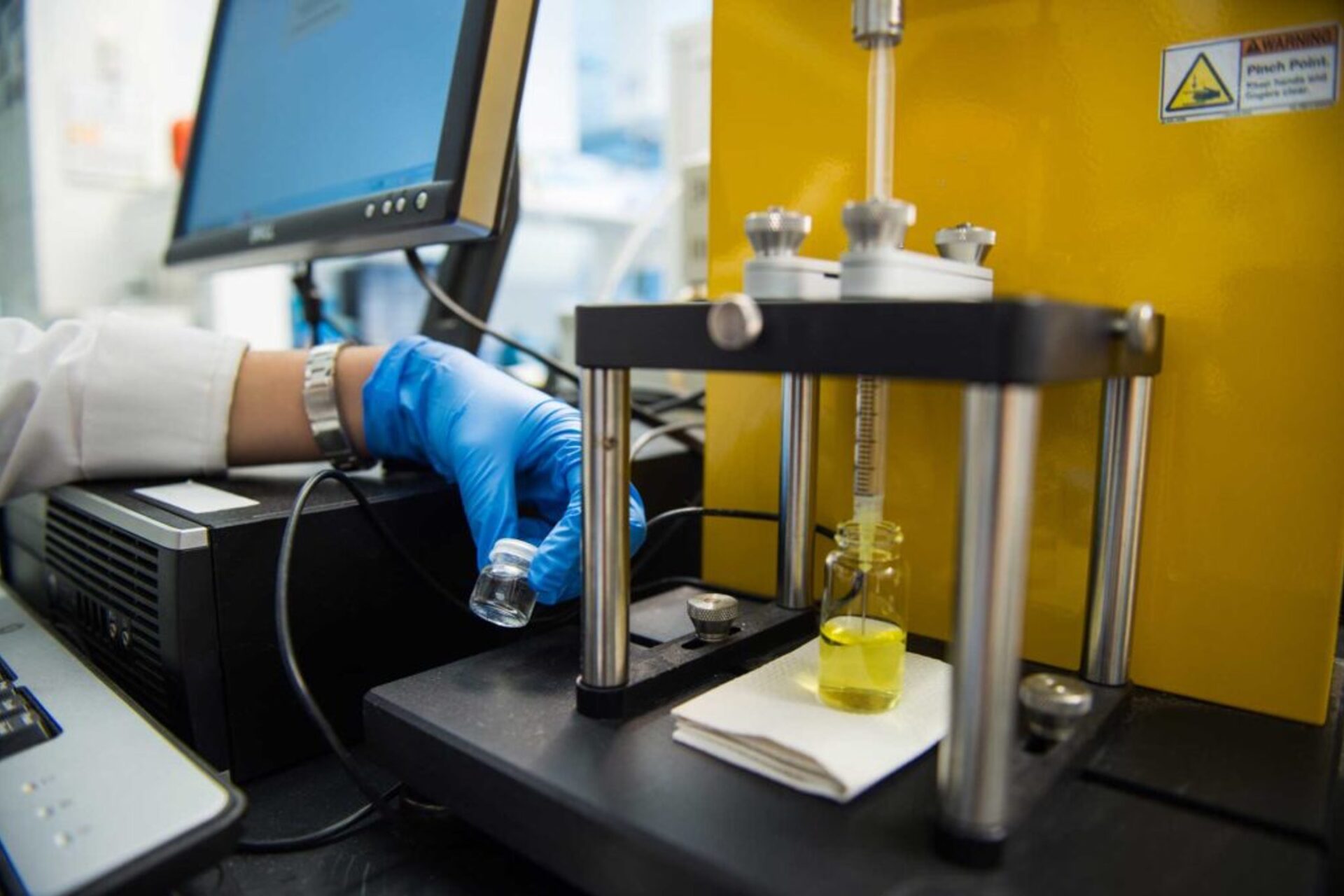
- June 10, 2022 / Press Release
New delivery method allows slow-release of broader array of peptide drugs in the body
A new study from the Schwendeman lab describes one of the first entirely new drug delivery microencapsulation approaches in decades.

- May 19, 2022 / Article
Nanobiotics: Model predicts how nanoparticles interact with proteins
Developed in the VanEpps and Kotov labs, a new machine learning model that predicts interactions between nanoparticles and proteins.

- May 2, 2022 / Article
Kotov joins American Academy of Arts and Sciences
Nick Kotov was named to the American Academy of Arts and Sciences for his significant contributions in scholarly and professional fields.

- January 13, 2022 / Press Release
Kotov Lab & Univ. of Bath Researchers Discover New Photonic Effect
The collaboration developed a new photonic effect which could speed up the development of new antibiotics and drugs through automation.

- September 8, 2021 / Award
Nick Kotov wins Nanoscale Science Award
Congratulations to Nick Kotov on winning the 2022 Nanoscale Science and Engineering Forum Award from AIChE for his discovery of chiral nanostructures with large amplitude optical activity and establishing chemical principles for their engineering.

- July 22, 2021 / Press Release
BioInnovations in Brain Cancer launches faculty search
The BioInnovations in Brain Cancer Initiative (BIBC) at the University of Michigan invites applications for a tenure-track position at any level in brain cancer biology and technology research (including, drug/molecular transport/imaging in the brain tissue; translation-focused glioma, epigenetics and/or scRNA-seq research; and non-viral nucleic acid delivery).
Applications will be accepted on a rolling basis, but review of applications will begin on October 1, 2021.

- May 21, 2021 / Press Release
Faculty Promotions
Congratulations to James Moon, Sunitha Nagrath, Anna Schwendeman and Anish Tuteja on being promoted to Professor!

- May 17, 2021 / Award
2021 BI Innovator Awardees
Congratulations to the 2021 BI Innovator Award Recipients. BI Innovator awards recognize members of the BI research community who are active participants in the research, innovation and translational ecosystem at BI and making a difference in our community.

- April 1, 2021 / Article
Recent BI Publications
Publications from BI Research Groups in March
- March 17, 2021 / Article
Kotov Lab develops structural batteries for mobile robots
Researchers in the Kotov lab are working on biomorphic structural batteries which could provide more energy to robots.

- March 1, 2021 / Article
Recent BI Publications
Publications from BI Research Groups in February

- July 20, 2023 / Article
Phase intensity nanoscope (PINE) opens long-time investigation windows of living matter, new article authored by Dr. Somin Lee published by Nature Communications Nature
“Our genetic code doesn’t actually include enough information to encode every detail of the organization process. We want to explore the mechanisms of collective behaviors without central coordination that are like birds flying in formation—in which the system is driven by interactions between individual parts,” Somin Eunice Lee Ph.D.

- November 30, 2022 / Article
‘Transformer’ pinwheels offer twist on nano-engineered materials
A newly discovered pinwheel structure — self-assembled from pyramid-shaped nanoparticles — may enable unique material properties that could be useful in areas like machine vision, armor, chemical and biological sensing, and more.

- September 22, 2022 / Press Release
A view into what’s really happening during gene editing for Precision CRISPR
Somin Lee and her research group developed a way to reduce trial and error in gene editing by getting a look at the process in real time.

- August 30, 2022 / Press Release
Durable coating kills the COVID virus and other germs in minutes
Polyurethane locks in the antimicrobial power of tea tree and cinnamon oils. The new technology from the Tuteja lab could start making public spaces safer within a year.

- August 12, 2022 / Press Release
Neuroregeneration and Cognition Challenge Seed Fund Awards
We are pleased to announce the funding selections for the MNI-BI 2022 Neuroregeneration and Cognition Challenge seed fund competition.

- August 4, 2022 / Award
2022 BI Innovator Awards
Congratulations to the 2022 BI Innovator Award Recipients. BI Innovator awards recognize members of the BI research community who are active participants in the research, innovation and translational ecosystem at BI and making a difference in our community.

- August 1, 2022 / Press Release
New members join BI’s External Advisory Board
BI welcomes Carl Gordon and Natasha Shervani of OrbiMed as new members of its External Advisory Board.

- July 25, 2022 / Award
Glotzer receives Vannevar Bush Faculty Fellowship
Sharon Glotzer has received the Vannevar Bush Faculty Fellowship from the U.S. Department of Defense, becoming one of nine distinguished faculty scientists and engineers to receive the award this year.

- June 22, 2022 / Award
$2.38M to test nano-engineered brain cancer treatment in mice
Joerg Lahann and Colin Greineder are part of the research team that received funding from the NIH to study a new nanomedicine that crosses the blood-brain barrier, engages the immune system and kills cancer cells may offer hope for treating the most aggressive form of brain cancer, glioblastoma.

- June 10, 2022 / Press Release
New delivery method allows slow-release of broader array of peptide drugs in the body
A new study from the Schwendeman lab describes one of the first entirely new drug delivery microencapsulation approaches in decades.
